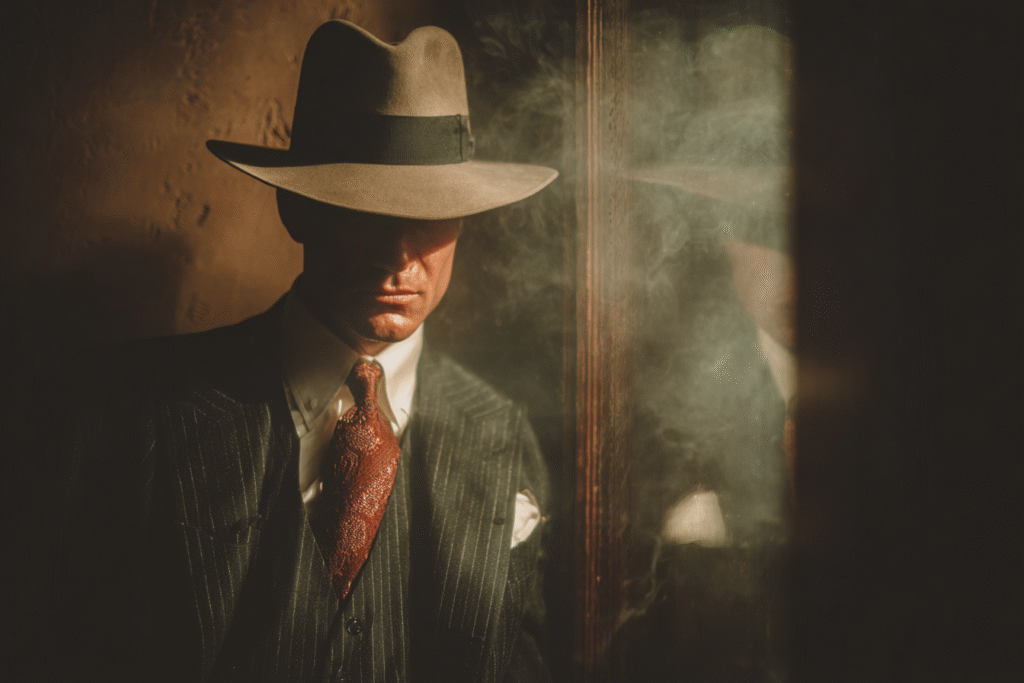
Old School vs New School Spy Thrillers
AKA: How We Traded Suspense for “Hold My Beer” Action Sequences
There was a glorious time — not as far back as dinosaurs, but far enough that you had to physically turn a page — when spy thrillers were built on tension. Real tension. The slow-burn, creeping dread variety that made you lean forward in your chair until you realized your spine was doing yoga poses you didn’t sign up for.
These were the days of The Bourne Identity, the early James Bond novels, and John le Carré’s Tinker, Tailor, Soldier, Spy. Books where spies didn’t have GPS, smartphones, retina-scanning hotel rooms, or magic pens that could order an Uber. They had to rely on deception, wits, physical tailing, and old-fashioned paranoia.
Today? Spy thrillers have swapped that creeping dread for frenetic action and what I like to call weaponized anxiety. Everyone’s running. No one’s sleeping. Plot twists hit like incoming artillery. And the hero’s smartwatch has more processing power than NASA had during the Apollo missions.
Let’s dig into what changed — and what writers can learn from both eras.
1. Old School: The Cold Sweat of Not Knowing
New School: The Panicked Sweat of Knowing Too Much
In le Carré’s world, no one told George Smiley anything. Ever. The man lived in a perpetual fog of half-truths, misdirection, and bureaucratic sabotage. The tension came from absence of information. Readers were right there with him, piecing together breadcrumbs and wondering if everyone in the room was lying (yes) and whether they were lying about lying (also yes).
Early Bourne? Same deal. Ludlum’s book is a masterclass in controlled reveals. Bourne’s amnesia isn’t just a gimmick — it’s the engine of the entire story. Every piece of information is dangerous, destabilizing, or wrong. That ratchets tension through the roof.
Bond’s early novels also relied on gaps — he didn’t know who to trust, how deep the conspiracy ran, or whether his briefing officer had conveniently forgotten to mention a small detail like the villain keeps sharks.
Modern spy thrillers, though?
We get everything, and we get it fast. Mission dumps. Satellite feeds. Intel briefings. Character backstories. Flashbacks. Flash-forwards. Flash-sideways if the author’s feeling frisky.
Old school fear: “What’s happening?”
New school fear: “Dear god, how do I keep track of all this happening?”
2. Old School Spies: Paranoia as a Lifestyle
New School Spies: Parkour as a Lifestyle
Bond in the books wasn’t the unflappable movie superhero. He got battered, bruised, betrayed, and occasionally humiliated. Bourne had to think. Smiley barely even fired a gun.
The action was precise, short, meaningful. A single punch mattered. A gunshot changed the entire trajectory of the scene.
The suspense came from the possibility of violence, not a rolling buffet of it.
Modern spy thrillers? We’re lucky if the hero takes a breath between fistfights, gunfights, drone strikes, and rooftop chases that defy the known laws of physics.
Today’s protagonists are less “spy” and more “Olympic gymnast with a bulletproof plot shield.” The pacing is relentless, the stakes are global by default, and hand-to-hand combat is served in bottomless refills.
Neither approach is wrong — but they tickle different parts of the reader’s brain.
Old school: “He might die… unless he outsmarts them.”
New school: “He might die… unless he outruns an explosion on a motorcycle while hacking a satellite with his watch.”
3. Old School Stakes: Personal and Political
New School Stakes: Planetary by Chapter Three
In Tinker, Tailor, the entire suspense engine revolves around discovering one mole in MI6. One man. One betrayal. And it’s absolutely riveting.
Bond’s early missions? Sometimes they boiled down to stopping a single smuggler, blackmailer, or lunatic with an inferiority complex.
Bourne? A man trying to find out who he was — and who was trying to kill him.
The stakes were sharp, specific, and intimate.
Modern thrillers have… escalated.
A typical contemporary spy novel:
- A viral bioweapon engineered by rogue scientists.
- A conspiracy involving six governments, three corporations, and two shadow cabals.
- A countdown clock because of course there’s a countdown clock.
- Bonus: a hacker teen genius who never leaves her gaming chair.
We’ve gone from “save the diplomat” to “save the world” as a baseline expectation.
Again — not wrong. But worth noticing.
4. Old School Tone: Slow Burn Cigarette Smoke and Moral Ambiguity
New School Tone: High-Octane, High-Tech, High-Stress
Old school spy thrillers embraced subtlety. They were comfortable with moral gray zones. Smiley often uncovered truths that made “victory” feel like a participation ribbon. Bourne grappled with guilt, responsibility, and identity. Bond, on the page, wrestled with trauma even as he kept drinking through it.
Modern thrillers lean into adrenaline and spectacle. Sleek tech. Exotic locations. Set pieces designed to make your pulse spike. Moral complexity is often present, but it’s not the focus — the pacing won’t allow it.
Old school tone: “Everything is a lie.”
New school tone: “Everything is trying to kill you.”
5. So What’s Better for Writers?
Both — if you use the tools intentionally.
This isn’t a “back in my day” rant. (If it were, I’d work in the phrase “whipper-snappers.”) Both eras offer powerful storytelling lessons:
What Old School Teaches Us
- Tension doesn’t require explosions.
- Information control is your friend.
- Paranoia is a spice — use it liberally.
- Small stakes can feel enormous when handled right.
What New School Teaches Us
- Modern readers love momentum.
- Action set pieces can deepen character when done well.
- Technology can be a clever plot engine — or a delightful obstacle.
- Global stakes appeal to readers raised on cinematic universes.
The trick is balancing suspense with spectacle, dread with drive, tension with tempo.
6. Why the Shift Happened
Two big cultural forces shoved spy fiction into its new, caffeinated shape:
A) Movies Took Over the Genre
Bourne (the films, not the books) and Mission: Impossible rewrote reader expectations. If Tom Cruise can run like a gazelle during mating season, modern heroes are expected to keep up.
B) Instant Information Culture
Writers today can’t lean on “mysterious secrets buried in dusty archives.” Readers know everything’s in the cloud now — or being hacked by someone barefoot in a hoodie.
So spy thrillers adapted.
So Where Does That Leave Us?
Right here, at the crossroads of subtle espionage and blockbuster spectacle.
If you prefer the old style — great. There’s a hunger for those slow-burn, morally thorny stories.
If you prefer the new — also great. Readers love breakneck pacing and big canvases.
If you can blend both? You’re golden.
- Give them suspense, but don’t be afraid of a little action.
- Give them tension, but remember modern readers love urgency.
- Give them character, but don’t forget plot fireworks.
- Bond walked so modern spies could sprint.
- Smiley whispered so modern heroes could yell.
- Bourne thought so modern protagonists could punch.
And the best spy thrillers today — the unforgettable ones — do all three.
–Mark



